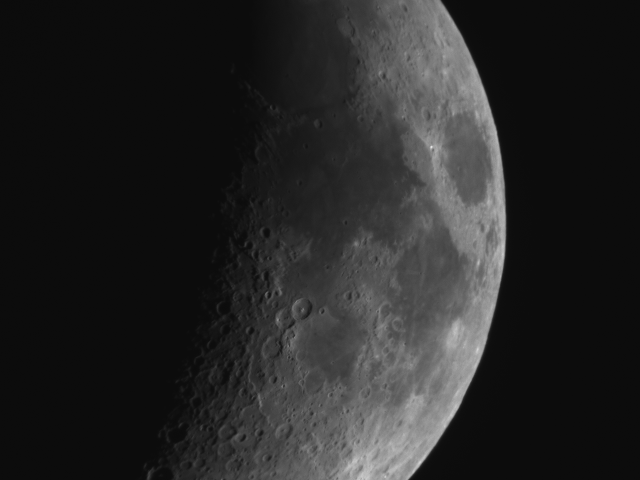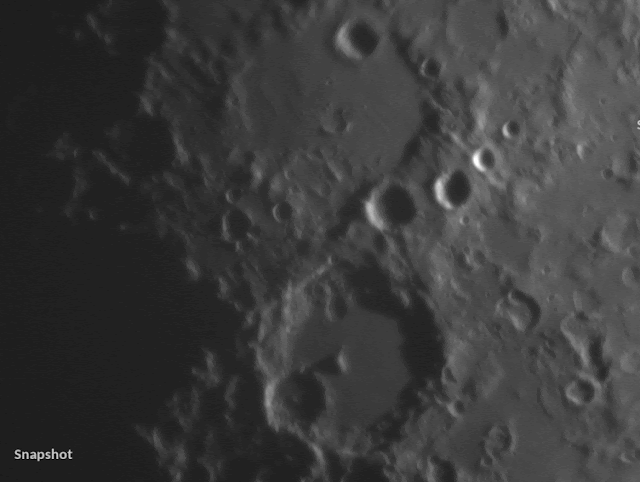These posts must not be interpreted as being recommendations for the routine capture of astronomical snapshots, for there is no doubt that the stacking of numerous replicate images increases the signal to noise of the final image, which allows much more sharpening and revealing of detail made possible by wavelet processing. That is the correct way to produce astronomical images.
However, it is a fact that a number of astronomers capture single astronomical images routinely with DSLR cameras. In fact, there are social media groups dedicated to the one-shot astronomical image.
If the astronomical camera is being used primarily in an outreach situation, possibly with a mount that is less than perfectly aligned, the object of the exercise is to stream images to the computer screen to be enjoyed by visitors to the event. Nevertheless, as we have said before, it may be desirable to capture individual snapshots to preserve a record of what was observed on the night. It was for reasons such as this, and for other applications such as microscopy, that the Snapshot facility was implemented by Nicola into AstroDMx Capture.
However, we needed to find out what kind of results might be obtained by taking a long-exposure snapshot in addition to capturing snapshots of the Moon.
The scope we used was a Skymax 127 with a 0.5 focal reducer, The camera was a QHY 5L-II-M monochrome CMOS camera.
Screenshot of AstroDMx capture for Linux streaming and capturing Lunar data
Snapshot of the mid-section of the Moon
These images were captured when the jet stream was far to the north of the country and so was not contributing to the degrading of the seeing conditions.
Three overlapping snapshots stitched with Microsoft ICE into a 3-pane mosaic
Snapshot of M13
The equipment capturing M13 data.
A single 30s, 16-bit snapshot exposure was made of M13. Also a single 30s dark-frame snapshot was made in 16-bit mode
Dark-frame snapshot
There are a number of hot pixels present in the dark-frame.
Uncorrected 30s snapshot of M13 in 16-bit mode
The hot pixels are also present in the snapshot
The dark-frame correction was made in the Gimp 2.10 by pasting the dark-frame as a new layer onto the M13 snapshot and subtracting it. Then the image was flattened.
30s snapshot of M13 in 16-bit mode, dark-frame corrected
Dark-frame corrected snapshot stretched in the Gimp 2.1
This is quite a presentable image, which can be compared with an image made by stacking 40 x 30s exposures. the coma on the edge stars is due to the use of s cheap focal reducer in this experiment.
Stack of 40 x 30s exposures
More detail could be stretched out of the stack of 40 x 30s exposures, which had 6.32 x the Signal to Noise ratio of the single snapshot.
It could be tempting to conclude that snapshots are adequate to obtain presentable astronomical images. However, this would be an erroneous conclusion. For detailed reasons look at this earlier blog post, as well as comparing the above two images of M13, and considering the animation at the end of this post.
Capturing a high magnification lunar image
Using a Skymax 127 Maksutov and a 2.5x Barlow with a QHY 5L-II-M monochrome CMOS camera. Using AstroDMx Capture for Linux, several snapshots of the Albategnius region of the 46.6% waxing Moon were taken at moments of good seeing, and the best image was chosen. Also a 1000-frame SER file was captured of the same region. The best 10% (100 frames) of the SER file were stacked in Autostakkert! 3.1, wavelet processed in Registax 6 and post processed in the Gimp 2.10. The snapshot could not be sharpened without increasing the noise in the image.
The equipment capturing Lunar data
Animation showing the difference between the results obtained from a single snapshot and a stack of the best 100 of 1000 frames captured under the same conditions.
There is no doubt at all that the stacked image is far superior to the single snapshot.
Snapshots have their place, but not for the production of high quality astronomical images.










